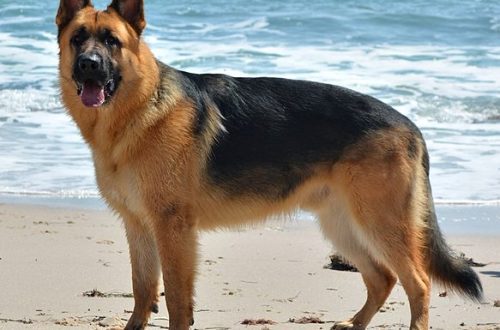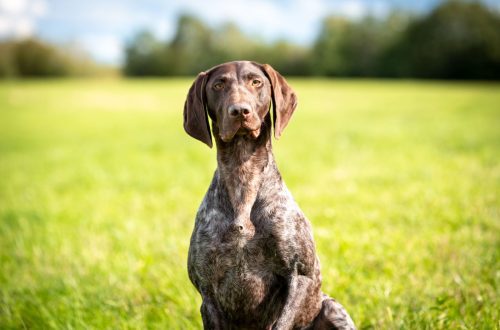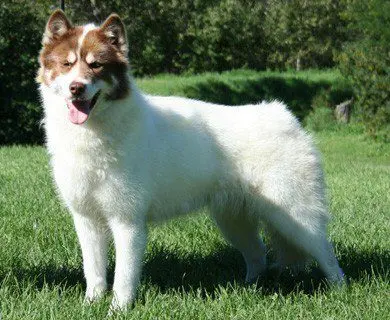
Chihuahua (razza canina)
Chihuahuas are decorative dogs of extremely small size. Infinitely devoted to the owner and extremely proud. Included in the top 10 most popular breeds in the world.
Contents
Characteristics of Chihuahua
| Country of origin | Mexico |
| The size | miniature |
| Growth | 15–20 cm |
| Weight | 1.8-2.7 kg |
| Age | 12–15 years old |
| FCI breed group | companion dogs |
Basic moments
- In relations with larger dogs behave on an equal footing. Barking a 50-pound shepherd dog for a Chihuahua is a common thing.
- Able to get along with other pets, if they agree to recognize their authority.
- Ideal companions, ready to accompany the owner wherever possible.
- Playful and active, but often require increased attention to their own person.
- They have a strong attachment to the owner and follow his every move.
- They easily adapt to any environment and can be content with rare and short walks, and if necessary, do without them completely.
- They do not agree to put up with loneliness and long absences of the owner.
- Very touchy and prone to frequent outbursts of jealousy.
- Chihuahuas are fully grown by the first year of life.
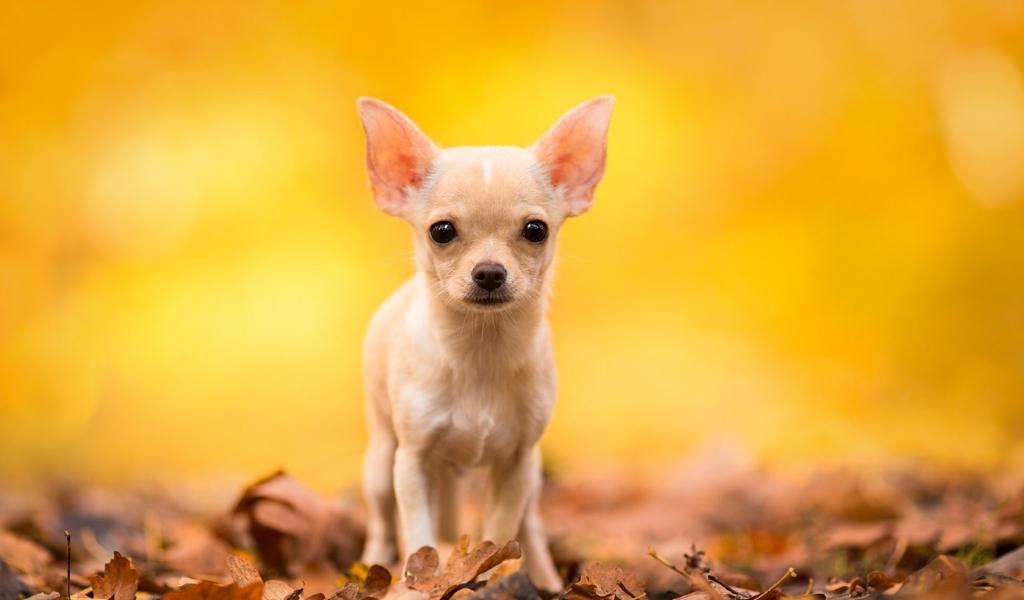


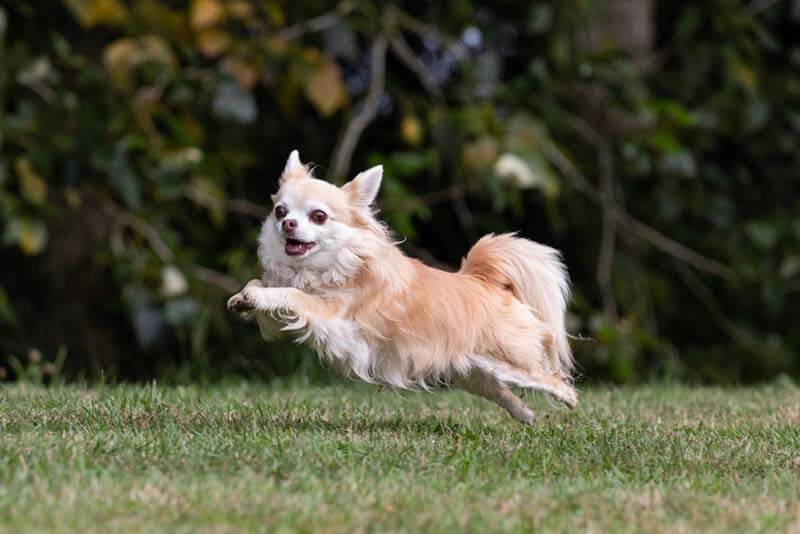
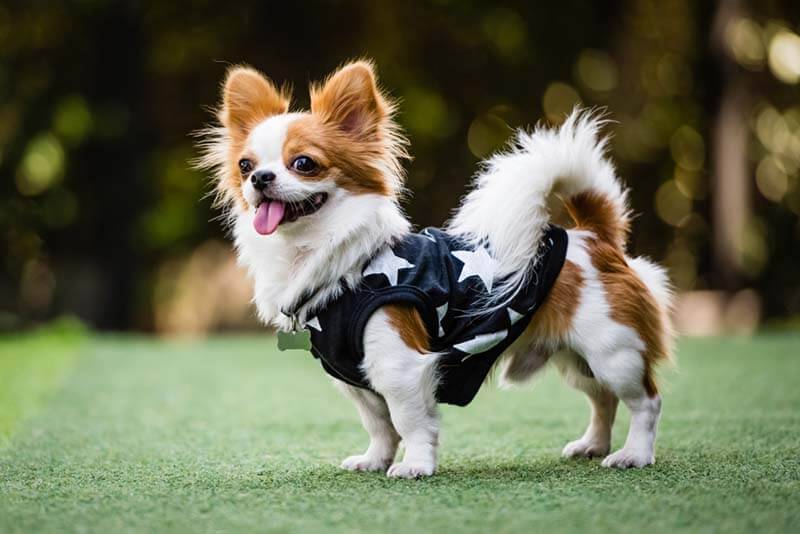
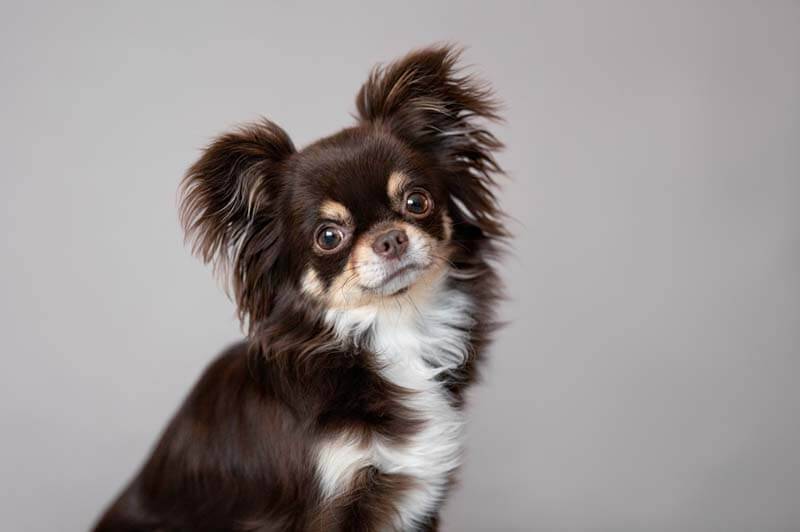
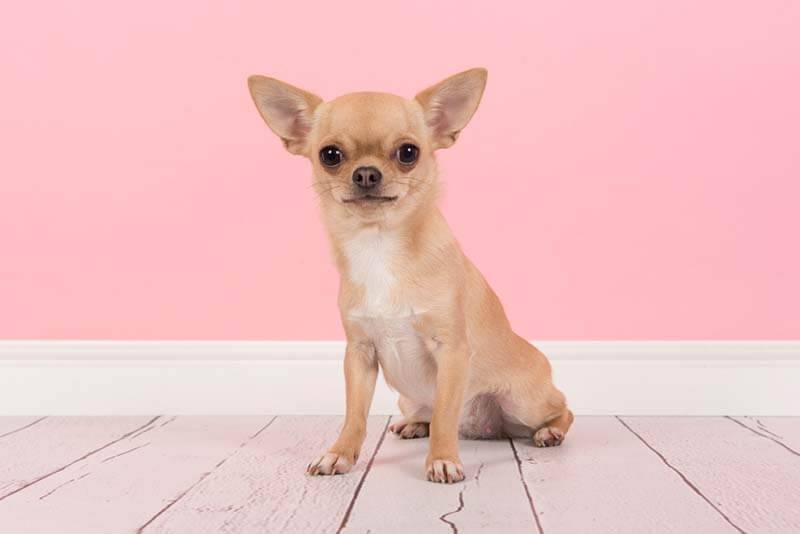
Chihuahua is a small dog with a big heart. These crumbs easily adapt to the interests of the owner and the situation, so they can simultaneously combine the features of an incorrigible homebody and a desperate traveler. Chihuahuas are easy to transport, they are happy to see him in all hotels offering accommodation with pets, and at social events such a dog is almost always a persona grata. Recently, chihuahuas have been actively conquering the world of gloss, driving around in celebrity handbags and actively participating in magazine photo shoots.
History of the Chihuahua
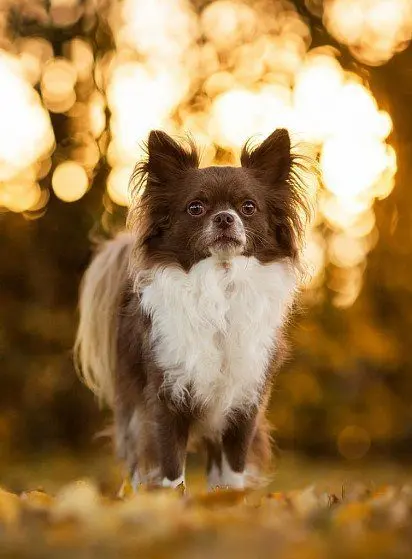
The name of the breed was given by the Mexican state of Chihuahua. It was from here that companion dogs began their triumphal march, first across the American continent, and later around the world. The ancestors of today’s Chihuahuas are considered to be the ancient Techichi dogs, which were bred by the Toltec Indians in the 9th century. Small in size and absolutely dumb animals were raised by the indigenous population for a purely practical purpose: they were eaten, and sometimes sacrificed to local deities. When the Toltec civilization fell into decline, its lands passed to the Aztecs, who continued to breed “delicious dogs” and were engaged in this business until the arrival of the conquistadors of Cortes.
With the fall of the Aztec Empire, the Techichi, like their breeders, fell on hard times. The animals were almost completely exterminated by the Spaniards, and only a few survivors took refuge in the forests. For almost a century, nothing was heard about the techichi, and only from the middle of the 19th century did traces of their descendants begin to be traced. During this period, tourists from America increasingly visited Mexico, to whom local merchants offered an exclusive live product – tiny dogs that fit in your pocket. The color of animals at the same time could be the most diverse, but one thing remained unchanged – their miniature size.
At first, dogs were named after the places where they were bought, such as “Arizona” or “Mexican”. But gradually the name of the northern state of Mexico – Chihuahua, or in Russian pronunciation – Chihuahua, was assigned to the breed. The descendants of the Aztec Techichi entered the US pedigree book in 1904, and three years later the mini-dogs crossed the Atlantic and settled with British breeders. The first breed standard for the Chihuahua was signed in 1923 in America, and at first the breeders’ association recognized only short-haired dogs as purebred. Longhaired individuals were included in the FCI standard only in 1954.
The first owner of a Chihuahua in the USSR was N. S. Khrushchev. The puppies were presented to the General Secretary in 1959 by the Cuban Comandante Fidel Castro. Soon, the Chihuahuas with the nicknames Mishter and Mushinka migrated to the breeder Evgenia Zharova, who took the breeding of the breed under personal control. As a result, the ancestor of the domestic “pocket” dogs was Mishter, who was mated with another imported female. Mushinka, who was not suitable for the birth of offspring due to health and age, made a career in cinema. You can see this “Mexican immigrant” in the film “The Elusive Avengers”, where she sits on the hands of Boris Sichkin’s character.
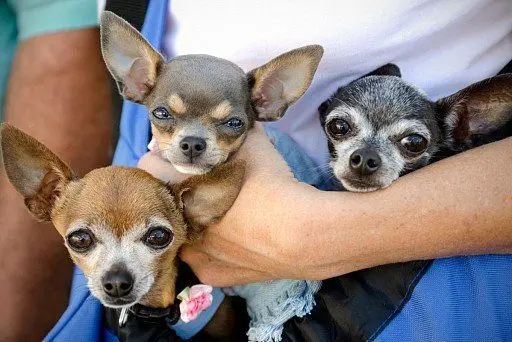
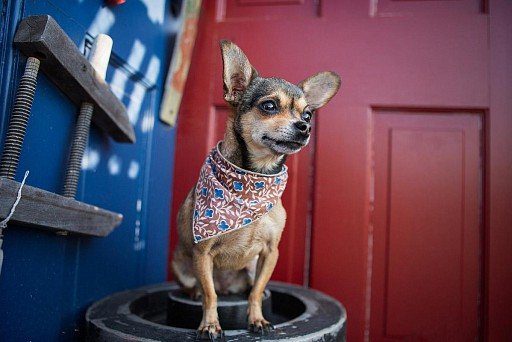
Video: Chihuahua
Chihuahua appearance
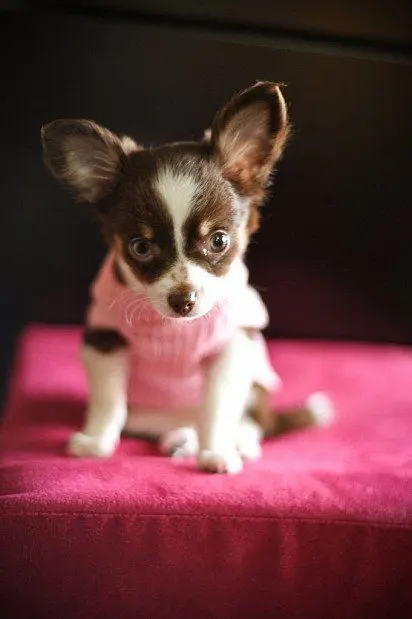
The appearance of modern Chihuahuas is partly a legacy of the ancient Techichi, partly the product of many years of experiments in mating animals with representatives of other breeds. So, for example, in the blood of today’s chihuahuas, genes of toy terriers , spitz , papillons and pinschers can be found .
Head
The skull is rounded, shaped like an apple. Individuals without a fontanel are considered reference, but for animals of the pet category, a small unossified section of the skull is allowed. The muzzle is broad and short, gradually tapering towards the nose. Seen from the side, straight. The transition from the forehead to the muzzle is wide enough, distinctly expressed. The cheeks are flat and dry, fitting closely to the skull.
Jaws and teeth
Chihuahua’s bite is straight and scissor-shaped. The optimal number of teeth is 4 canines, 12 incisors, 10 molars and 16 premolars.
Nose
Short, looks up a little. The color of the earlobe can be black, or in the tone of the main color of the animal, although in the case of show class individuals, preference is given to the first option.
Eyes
Round, large, but without bulge. The ideal shade of the iris is dark. Light eyes are not a reason for disqualifying a Chihuahua, although they are undesirable.
Ears
Erect, broad at the base, with a gently rounded tip. In a dog that is in a calm state, they are “divorced” in different directions and hang down at an angle of 45 °.
Neck
Medium length, with a slight curve at the top. Males have larger necks.
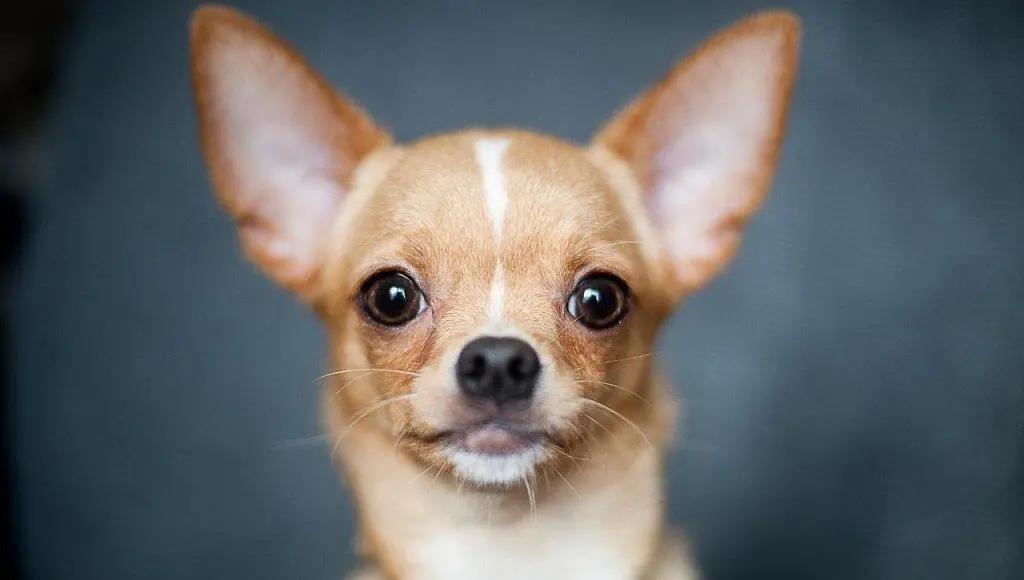
Frame
Compact, with a short back and a muscular loin. The topline is level. The croup is wide, strong, without a noticeable slope. Chest of sufficient width, moderately deep. The abdominal muscles are well tucked up. An insufficiently tightened abdomen is not desirable.
limbs
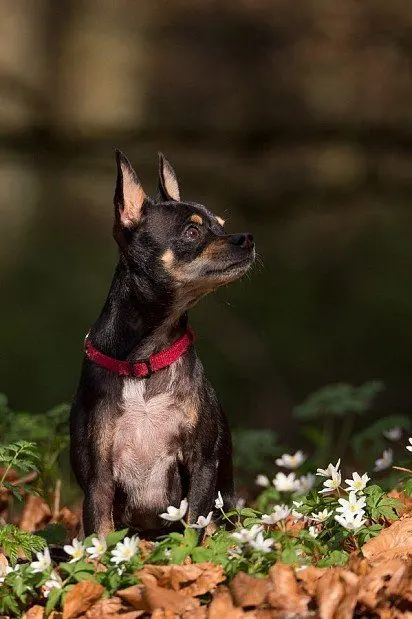
The front legs of the Chihuahua are long and straight. Shoulders are muscular and dry. Elbows are strong, pressed to the body. The pasterns are flexible, strong, set at a slight inclination. The muscles of the hind legs are developed, the set is correct, even. The limbs are parallel. The paws are small in size, with the fingers apart. Pads developed, springy. Nails moderately long, arched.
Tail
The Chihuahua’s tail is medium in size, set high, thickened at the base and gradually tapering towards the tip. In purebred individuals, the tail bend has the shape of a crescent, and its tip “looks” into the lumbar region.
Wool
According to the type of coat, Chihuahuas are divided into long-haired and short-haired. The former have a soft silky coat of a smooth or slightly wavy texture with a small amount of undercoat. The longest outer hair grows in the neck, ears, paws, as well as the back of the limbs.
In short-haired individuals, the awn is smooth and short, close to the body. Longer hair in the areas of the neck and tail, the shortest – on the head and ears.
Color
Coat color can be anything except merle.
Defects in appearance and disqualifying vices
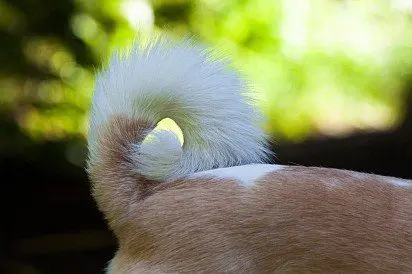
Deviations from the standard can be both minor and serious. The most common faults in the appearance of the Chihuahua are pointed ears, a twisted or short tail set, a long body and a short neck. A sloping croup, a narrow chest, short or closely set limbs are not welcome. Serious deviations from the norm are considered to be a narrow skull, too long muzzle, deep-set or, conversely, excessively bulging eyeballs, patellaluxation, and malocclusion.
The main disqualifying vices of the Chihuahua:
- open fontanelle of the skull;
- behavioral deviations (cowardice, aggression);
- absence of a tail;
- short or cropped ears;
- excessively long body;
- alopecia in short-haired individuals (baldness);
- too long and fluttering outer hair (in long-haired animals);
- “deer” silhouette (small head with elongated neck and legs);
- weight less than 500 g and more than 3 kg.
Chihuahua photo
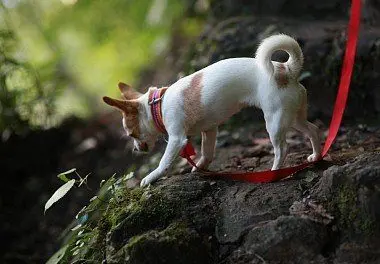
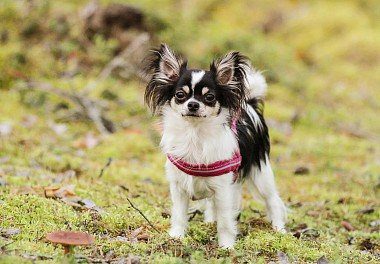
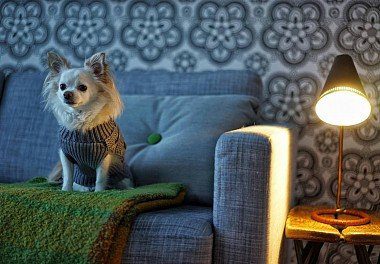
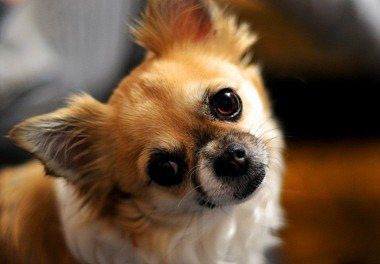
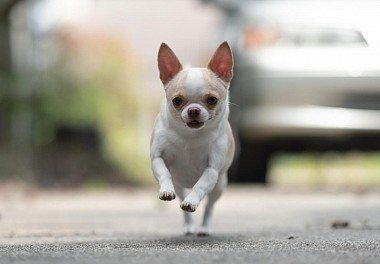
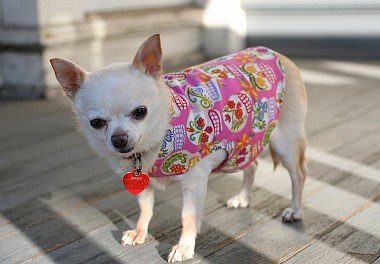
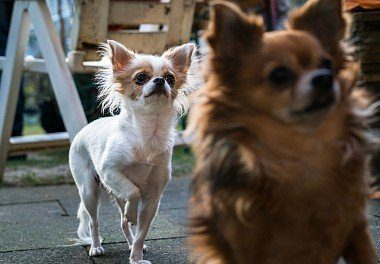
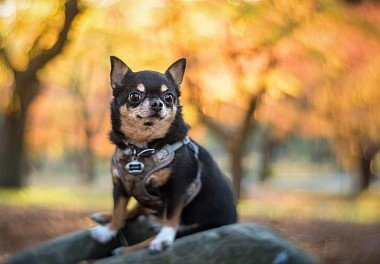

Chihuahua character
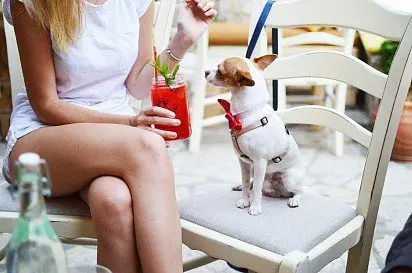
Chihuahua is a little philosopher who has absorbed the wisdom of his ancient ancestors, who has learned to understand and accept life in all its manifestations. These babies differ from other dwarf breeds in their calmness and poise: they will not hysteria over any trifling matter and do not shake from an excess of emotions in a feverish “chill”. Adults keep themselves serious and a little arrogant, which does not fit at all with their “pocket” dimensions. In general, chihuahuas are very similar to people: each animal has a whole set of unique character traits that make it different from other members of its own kind.
Representatives of this breed are very proud, therefore, they respond to a disrespectful attitude towards themselves with cold contempt. These “Mexican amigos” adore their own owners to the point of madness. Whatever the dog does in the presence of the owner, it does it for only one purpose – to get his approval. Passionate love for the owner is accompanied by no less strong jealousy. To verify the veracity of this statement, it is enough to stroke or treat another dog in front of the pet.
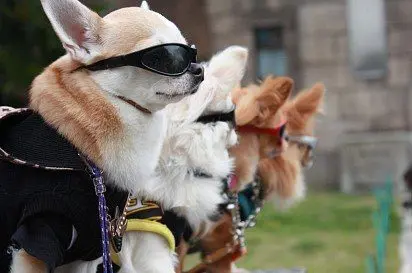
Chihuahuas are great smart people, quickly recognizing falsehood and pretense. They also learn the nature of their own owners quickly, which helps the animals to actively “rub” into the trust, and sometimes openly manipulate their two-legged friend. And they are also extremely inquisitive, so they love to “scan” all the actions of a person. If you are busy in the kitchen, there is almost certainly a Chihuahua tangled somewhere at the level of your slippers. Relaxed in front of the TV? You can be sure: you have long been “under the hood” of the pet located in the next chair.
Most individuals have an urgent need to create their own shelter. In particular, chihuahuas are able to build a lair for themselves in a matter of seconds from a sofa blanket or an accidentally forgotten T-shirt. Usually the dog arranges a kind of hole in them, into which it climbs in order to hide from the outside world and calmly think.

There is an opinion among breeders that long-haired Chihuahuas have a peaceful character, while their short-haired counterparts are more active and obstinate. There are also quite a few exceptions to this rule, so if you meet a perky but naughty fluffy, don’t be surprised – this is one of those frequent cases when the law did not work.
Despite their more than modest size, the descendants of techichi are considered notorious bullies. According to breeders, it is much easier to make a Chihuahua angry than a pit bull. Moreover, these tiny tomboys stand up with redoubled energy to protect the owner. The Chihuahua will not be afraid of the physical and numerical superiority of the enemy, because in the event of a threat, he completely loses his sense of reality, revealing heroism that is incredible for his physique. Animals openly dislike strangers, therefore, for each guest who appears on the doorstep, they have a good portion of discontent in store, expressed in barking, and sometimes in biting the legs of the “alien”.
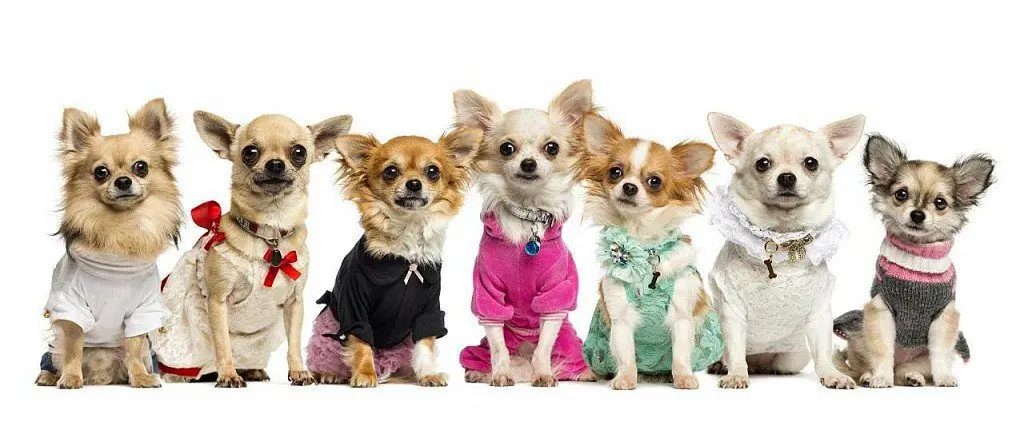
Education and training
At one glance at a chihuahua, they want to constantly caress and pamper, but certainly not to train. And yet, refusing to train an animal is a serious mistake. The optimal age to start training is 2-3 months. At this point, the puppies are already able to master a set of simple commands like “Fu!” and “Location!”. In general, Chihuahua training is aimed at the speedy socialization of the dog and instilling in it the norms of behavior, and not at teaching complex circus tricks. An exception is programs for show class individuals, future regulars of exhibitions. Here the puppy will have to be taught to stand calmly, adequately perceive the environment, and also demonstrate teeth and bite. If you really want to brag to your friends with an acrobatic number performed by a Chihuahua, you can train your pet in somersaults over the back and jumping over low barriers.
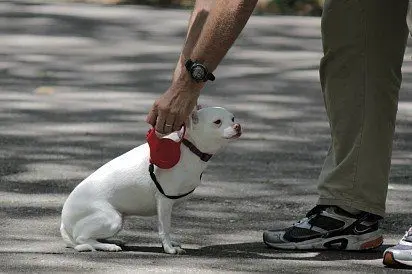
Chihuahuas are capable learners. Of course, things will not do without the manifestation of stubbornness on the part of the pet, so you will have to stock up on patience and your puppy’s favorite treats in advance. For the mistakes made during the training, the baby can be reprimanded. As a rule, puppies quickly understand what they are scolded for and correct themselves. Screaming and physical violence are strictly unacceptable. The first causes a strong feeling of stress in the animal, which is why representatives of this breed often make “puddles” in the wrong place, and the second is completely fraught with serious injury.
From the very first days, assert your own authority and do not allow the baby to violate the boundaries of your possessions, in particular, jump on the bed. Despite the fact that the descendants of techichi are considered dogs of one owner, a properly educated animal must obey each member of the family. Well, in order for the puppy to learn this lesson, let him understand that for non-execution of the command – no matter who it was given – he will not be praised.
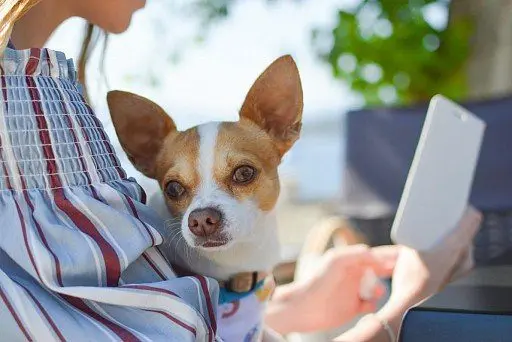
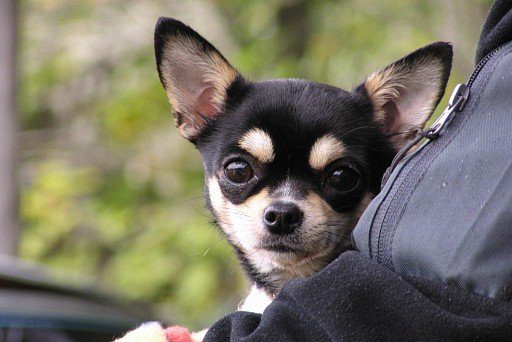
Care and maintenance
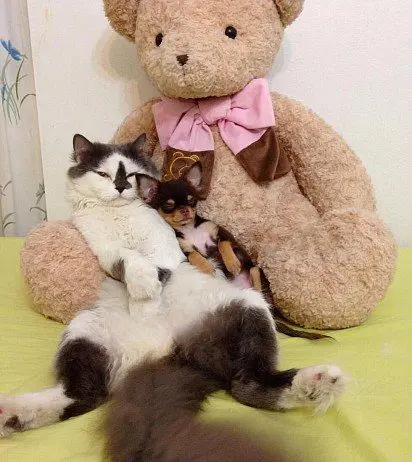
Chihuahuas are relatively unpretentious dogs, easily getting used to life both in a small apartment and in an elite mansion, but you still have to work on arranging a separate corner for a four-legged newcomer. In particular, the puppy needs to purchase a comfortable bed or a house in which he would be able to remain “alone with his own thoughts.” The food bowl should correspond to the dimensions of the animal, as well as the toys bought for it.
Since representatives of this breed are distinguished by a fragile physique, they will have to be monitored constantly. Even a simple jump off the couch or accidentally knocking over a vase can cause serious fractures for a dog. In the off-season and in winter, Chihuahuas are very cold, so insulated blankets-overalls will come in handy. In addition, due to natural curiosity, little “Mexicans” often gnaw on small objects. Accordingly, household chemicals should be hidden away from them, as well as shoes and electrical wires.
Hygiene
Too frequent water procedures do not have the best effect on the condition of the dog’s coat, making it brittle and overdried, therefore short-haired individuals are bathed no more than once every 3-4 months, and long-haired individuals – once every 1-2 months. In the process of bathing, the ears of the animal are covered with cotton swabs to prevent water from getting inside. Dry the coat with a towel or hair dryer.
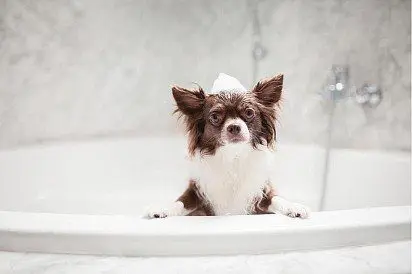
Comb your Chihuahua with a soft brush every 2-3 days. The secretions that accumulate in the corners of the dog’s eyes are removed with a cotton pad soaked in water or cool tea. Ears are supposed to be examined once a week. The dirt accumulated in them is removed with a veterinary lotion and a cotton swab. Nails are trimmed every 7-10 days with the smallest nail cutter. By the way, the dogs themselves hate this procedure, therefore, if the process is carried out at home, the second assistant will not be superfluous.
The anal glands also need timely cleaning, otherwise the animal will experience discomfort and “roll” backwards on carpeted surfaces. But since the removal of the secret is an operation that requires some skill, it is more expedient to entrust it to a professional (veterinarian). Carefully monitor the Chihuahua’s mouth, removing plaque that accumulates in it with a cotton swab.
Toilet
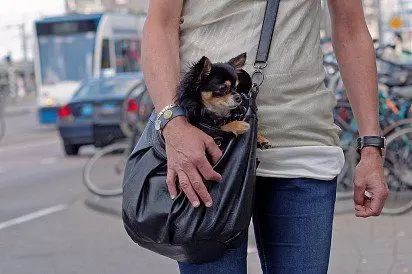
Using the toilet is a wisdom that Chihuahuas do not always learn quickly and easily. First of all, buy your pet a tray with low sides that matches his build. Secondly, ask the kennel employee or the former owner how the puppy got used to defecate. Usually, animals that have been trained to walk on a diaper or a newspaper carry over their habit to a new home. You can also form a skill on your own, after sleeping and feeding, putting the puppy in the tray. For greater “attractiveness” of the toilet, you can put a wet diaper in it, on which the dog managed to go earlier. If you often leave the house, put the baby in an aviary, where you first put the tray. It is not a fact that the puppy will immediately understand what is required of him, but the more often you do such a trick, the more likely it is.
You can teach a puppy to use an outdoor toilet from 3, and preferably 4 months, when the animal has received all the scheduled vaccinations. At first, you will have to take the dog out often, as puppies relieve themselves every two hours. Stay outdoors as long as possible so that the animal has time to fulfill its plan. Usually go for a walk immediately after sleep or a meal. For more motivation, you can take a diaper with you, on which the puppy is used to urinating at home. If the number with a diaper did not have its effect, find a place on the street where other dogs have previously made a toilet and bring the puppy to it. Usually a chihuahua is inspired by the example of relatives and sits next to him.
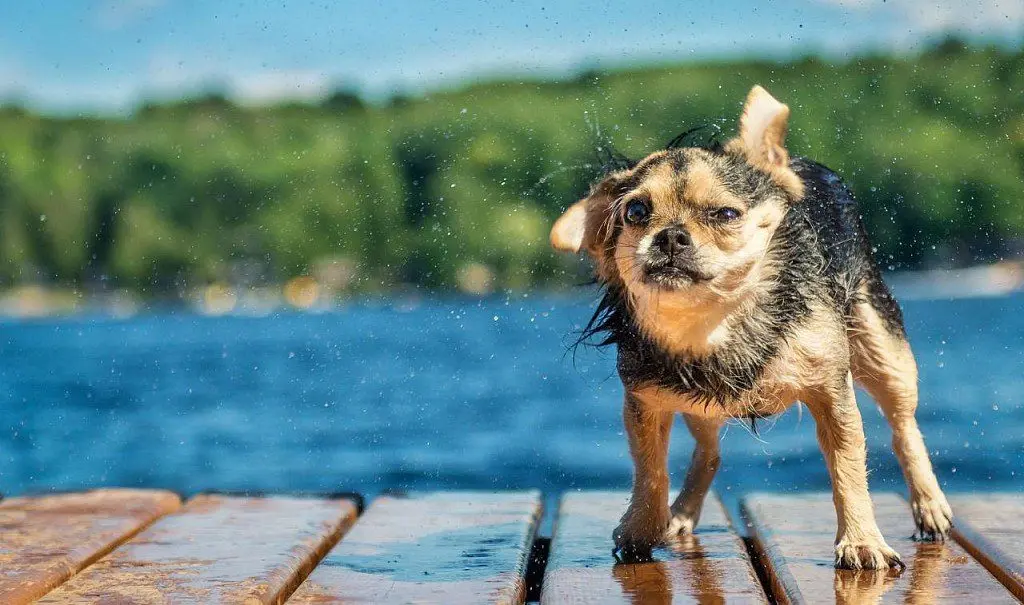
Feeding
The Chihuahua has a sensitive digestive system, so feeding one “dry” negatively affects the health of the dog. Try to alternate between wet and dry foods, favoring super premium varieties. The daily diet for a Chihuahua is calculated according to the principle: 60-70 g of food per kilogram of animal weight, that is, the total weight of breakfast and dinner for a two-kilogram individual should not exceed 150 grams.
For your information: a mixed diet (a combination of natural products and industrial feed in the diet) provokes urolithiasis in a Chihuahua.
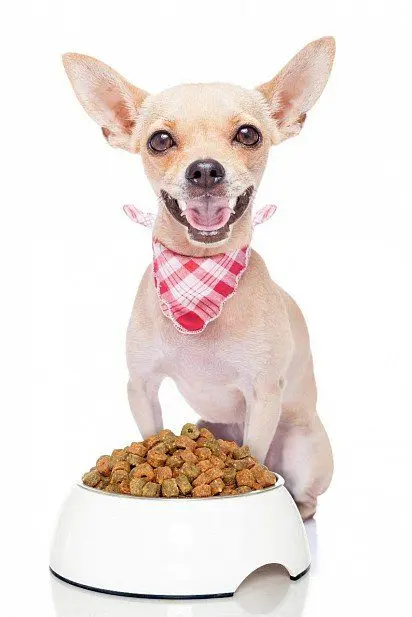
It is recommended that chuhuahuas who adhere to a natural diet be fed lean meat (beef, veal), sour milk and cereals, and the meat must undergo heat treatment. Once a week, a pet can be treated with boiled offal (liver, lungs, heart, kidneys), fish fillet (only sea fish that has undergone heat treatment) and an egg. A couple of times a month they give boiled chicken meat without skin. From cereals, buckwheat, rice and corn are in priority. Vegetables are served both raw and steamed. You can prepare some kind of salad by chopping a raw vegetable on a grater, lightly seasoning it with sour cream or vegetable oil. Fruit is used as a treat or reward. In addition, it is useful to mix vegetable oils, bone meal and fish oil into food, as sources of polyunsaturated fatty acids,
Strictly contraindicated:
- pork, as well as any raw meat;
- sweets and confectionery;
- fried and fatty foods;
- milk;
- River fish;
- legumes and nuts;
- spicy and salty dishes;
- bones.
Chihuahua puppies eat up to 6 times a day, three-month-old babies – 3-4 times, six-month-old animals – 2-3 times. It is preferable to feed babies under the age of one year with the same food / feed that he ate at the nursery or from the previous owner. Diet changes should be gradual. In particular, the transition from “natural” to “drying” should be stretched for 4-5 weeks. To make the transition back to natural nutrition, use semi-moist grades of industrial food.
Important: the food in the bowl must be at room temperature.
Adult animals are fed twice a day. In between “meals” Chihuahuas can be treated with rye crackers or a special bone. Older dogs are often switched to single meals to avoid gaining excess body weight.
Chihuahua and children
The cute appearance of a chihuahua forms a false idea in children about the dog as a living toy. In fact, a pet will not endure someone’s whims, and even more so violence. An animal responds to a disrespectful attitude with resentment, and sometimes with aggression, so leaving a dog as a nanny with a baby is a bad idea. Older children need to be explained that chihuahuas are very fragile creatures, so you can’t start a comic fight with them or arrange bed jumping competitions.
Walks and trips

For walking, you need to purchase a leash or tape measure that will help control the behavior of the dog in case of danger. For travel and trips to the veterinarian, a carrying bag and a closed container are suitable, and, according to the breeders, the pets themselves prefer the first option. In transport, a Chihuahua can feel nauseous, so be sure to bring motion sickness tablets with you, as well as a small container of drinking water. Pampers and bedding for the bag/container will come in handy on long journeys (airplane, train).
Note: in order to be able to travel with a pet on public transport, you must first obtain a veterinary certificate Form 1.
Chihuahua health and disease

Chihuahuas can live up to 20 years, although the average life expectancy of these crumbs is 12-15 years. In general, the descendants of the techies are in good health, however, in spring, autumn and winter, animals are allowed to walk only in clothes, since representatives of this breed are prone to SARS.
Diseases most common among Chihuahuas:
- allergy;
- hydrocephalus;
- problems with teeth (caries, periodontitis, pulpitis, retention cysts);
- hypoglycemia;
- urolithiasis disease;
- demodicosis;
- epilepsy;
- dysplasia of the mitral heart valve;
- pulmonary stenosis.
How to choose a puppy
Carefully study the breed standard and resist the temptation to choose a Chihuahua solely on the color and eye color. In the foreground should always be the health and purity of the puppy. We avoid individuals with discharge from the eyes, bad breath and traces of alopecia. A strict “no” to melancholy and cowardly kids.
Buying a mestizo in order to save money is also not the best alternative. Most of these dogs have congenital genetic pathologies, in addition, they are characterized by mental instability. When choosing a Chihuahua puppy, its gender also plays an important role. Girls are more finicky and capricious. Boys, on the contrary, are more obedient and softer. By the way, both females and males of the Chihuahua mark their territory, but the former do it less often.
Pay attention to the weight of the future pet. A three-month-old puppy should not weigh less than 0.5 kg and more than 2.7 kg. An exception is considered to be animals of the super-mini-class. Adult representatives of this species have a weight of 500 g to 1 kg and can fit in a tea cup. However, keeping such individuals is more difficult. In addition, due to their ultra-miniature size, Super Mini Chihuahua females are unable to bear healthy offspring.
Photo of chihuahua puppies
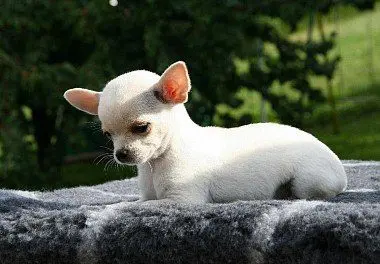
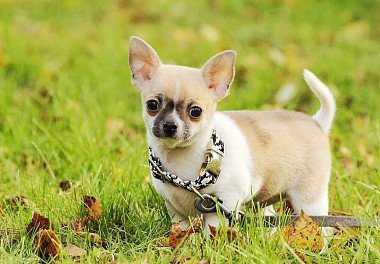
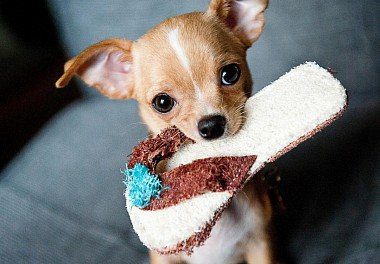
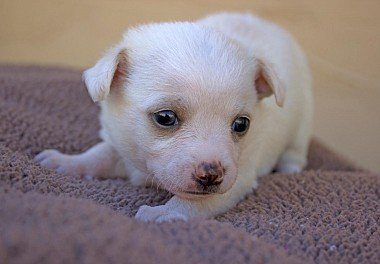
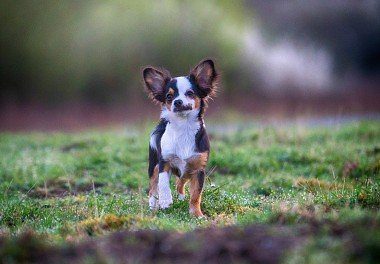
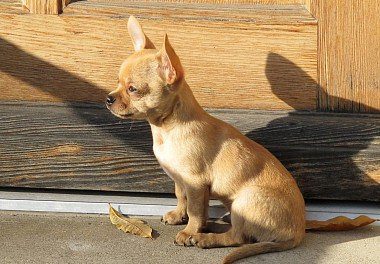
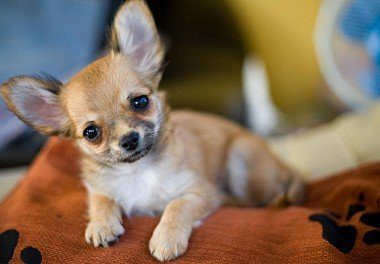
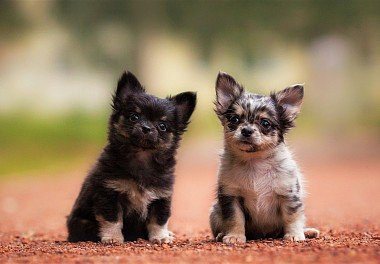
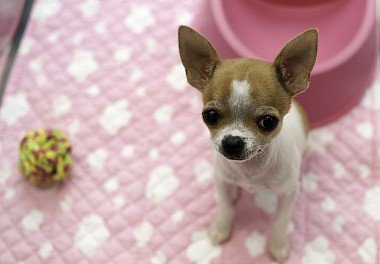
How much does a chihuahua cost
The cost of a Chihuahua puppy with the RKF metric is about 250$ – 300$. Mini-standard animals go for 400 – 800$. The most expensive class is super-mini (adult weight up to 1 kg). The price tag for such a “pocket” pet ranges between 1300 and 1500$.



